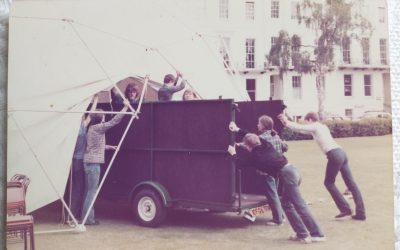I was in the audience this week at a concert of ‘early music’. At one point, a harpsichordist played a piece. Between two of its variations he pulled out a harpsichord stop which produced a different tone colour, and then he played a fast variation.
When it was over, a woman leaned over to me, pointed at the harpsichord and asked, ‘What was that lever he pulled which made the instrument play faster?’
I was a bit taken aback. I explained that he’d just changed the tone colour by using one of the stops. ‘Was there a change of tone?’ she said. ‘I didn’t notice that. All I noticed was that he pulled some lever and suddenly the harpsichord was, like, “Whee!”‘ She mimed something whizzing along merrily.
‘The instrument doesn’t play itself!’ Bob burst out. ‘It was the player who produced the fast notes!’ The woman took this in, raised her eyebrows, tilted her head and nodded thoughtfully as if to say, ‘Well, now I’ve learned something.’
During the rest of the concert, I couldn’t get her question out of my mind. It seemed to imply a hinterland of strange assumptions. Do people really think that you can press a button or pull a lever and make an instrument ‘play faster’? How do they think the notes get into the instrument? What do they think when they watch the player’s hands moving on the keys?




Fascinating! When you say “How do they think the notes get into the instrument?” it just reminds me of how mystical all the devices that we own nowadays seem to me sometimes. Maybe the woman just assumed there was a microchip inside?